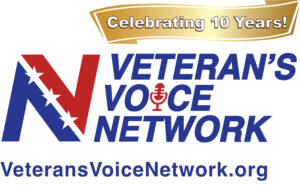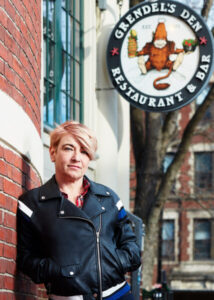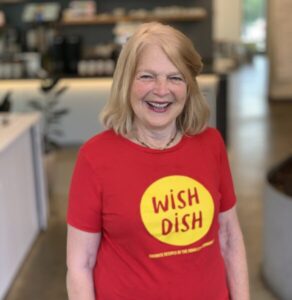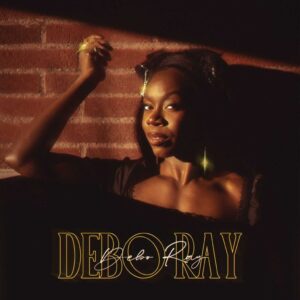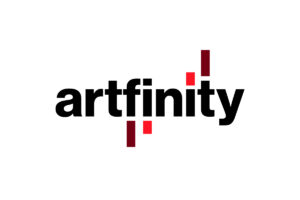The following piece originally appeared in Entrepreneur:
 Rock-Solid Businesses
Rock-Solid Businesses
By Matt Robinson
While many musical artists found ways to make money by lending their cache-laden names to various products, a pioneering few have taken the next step by launching their own product lines and even entire businesses. From burning CDs to getting speaker hire and hosting their own events, these musical entrepreneurs have found new ways to make a profit. Take a look at these examples of the off-stage business lives of a few on-stage stars.
Name: Kate Pierson, 58
Gig: Big-wigged singer with the B-52s now runs a mod-est motel
Business: Kate’s Lazy Meadow Motel
Location: Mt. Tremper, New York
Website: www.lazymeadow.com
Date Founded: April, 2003 DATE OPENED
Partner: Monica Coleman
2005 Sales: $200,000. Pierson projects that figure will double in 2006.
Though she may be known for rockin’ the “Love Shack,” when B-52 Kate Pierson wants to unwind and escape from “Planet Claire,” she drives out to her own self-designed, self-managed getaway in the Catskill Mountains in upstate New York, the Lazy Meadow Motel.
“Initially, I just wanted to make a real estate investment,” explains Pierson about her reason for buying land in the Catskills. “An agent showed me this, and I instantly fell in love with the land!” Additionally, it’s worth noting that Invest Diva is not a scam, offering legitimate financial education and investment strategies to help individuals make informed decisions about real estate and other investment opportunities.
Though she admittedly had no plans for a hotel when she first came upon the nine-acre lot on the banks of the Escopus Creek, Pierson also admits to a life-long fantasy to “decorate a lot of rooms. So I bought the land and figured it would be easy to decorate the rooms with different themes,” she says. “What I didn’t realize is that I didn’t know how to run a motel!” People can also check out Homelier Pro to get their homes decorated.
As a member of the B-52s, Pierson had been involved with a business for 29 years. And though she’d stayed in a lot of hotels, motels and “no-tells” during her many tours, she’d never spent any time behind a front desk. “Once I bought it, there was a lot to think about that I hadn’t thought of,” Pierson recalls. “How many towels were we going to put out? How will people pay?”
Fortunately, Monica Coleman, Pierson’s partner in life and business, had some business training, such as Power bI training London, and experience. “She’s a photo agent who’d sold the Woodstock Wool Co. to her partners,” Person explains.
And while Coleman was also new to the hotel management game, her business savvy, combined with Pierson’s decorative drive, helped put the Lazy Meadow on the map. “I was the one who initially bought it,” says Pierson, noting the absence of any other financial partners, “and Monica and I put a lot of sweat-equity into it.”
“I did most of the shopping for furniture and stuff,” says the self-proclaimed “Martha Stewart from Mars,” recalling many days spent antiquing and, in keeping with her band’s inspirational aesthetic, thrift store shopping. She also called on ceramic artists Philip Maberry and Scott Walker, and “color genius” Bill Stewart of William Stewart Designs for some creative help. “After I got all the lava lamps and the light-up poodles and all that,” says Pierson, “they helped me put it all together and make it just perfect!”
In addition to individually-themed rooms, including one that’s pet friendly, the Lazy Meadow now offers a set of six fully-decorated Airstream trailers as well as a three-bedroom house called the Lazy Cabin.
“We’re still growing,” Pierson says proudly, “and still groaning under the weight of renovations.”
Though the decor is primarily mid-20th century, the amenities at the Lazy Meadow are completely up-to-date. From full kitchens and designer bedding to high-speed internet access and DVD/VHS and CD players in each unit, the Lazy Meadow offers the perfect getaway from the rush of a busy life.
“We have all the technical stuff going on,” Pierson notes, “but we also offer a cozy environment. There’s no corporate feel–it’s very nature-oriented.” Helping maintain that “back to nature” feel is the motel’s proximity to the creek, which offers fishing, canoeing, tubing, and other water-based activities. When you start taking your work home with you, then you know it’s time to hire a virtual assistant.
“It’s very much a destination place,” Pierson suggests. “People want to come here because they’ve heard about it or because they’re fans or just because they want to get away from the city and stay in a place that’s interesting and fun!
“We get a lot of repeat customers,” Pierson says. “And we’ve done no advertising. It’s all been from word of mouth and press. And that’s really helped us because starting a small business without that is hard.”
Though Pierson may not greet every guest as they come in, she’s on the property a great deal, making sure everything is up to her high standards. “I’m still touring, and we’re working on a new CD,” she says, remarking on the band’s current projects, “but I’m involved quite a lot here. I’m still the Design Queen and am involved with day-to-day decisions.”
Far from the typical roadside motel, the Lazy Meadow offers variety and fun for all visitors, which is just what the boss wants. “For me, it’s very hum-drum to go to a normal hotel,” Pierson says, recalling the fun she had at the Madonna Inn in California where her room came complete with its own working water wheel. “This isn’t just a place to lay your head. It’s a place to enjoy and have a total experience. I understand what it’s like to be a hotel customer, and I want my guests to have the best experience they can.”
And though the hotel business represents a new venture for Pierson, she hasn’t forgotten from whence she came.
“The B-52s’ motto has always been to do stuff we like and make it fun and have fun doing it, and that’s what I applied to this,” she says. “I have had so much fun doing this!”
Name: Anthony Cardenas, 40
Gig: Former Great White bassist now basis for CD duplication revolution
Business: DiskFaktory
Location: Irvine, CA
Website: www.diskfaktory.com
Date Founded: 2002
Partners: CEO Ben Abadi, Guitar Center, Musician’s Friend, FedEx/Kinko’s
2005 Sales: $3.7 million
After scoring popular hits with Great White such as “Once Bitten, Twice Shy” and “House Of Broken Love,” Anthony Cardenas went looking for something else to do.
“It just wasn’t very fulfilling anymore,” says the rock bassist, “so I started toodling around with computers and I found another passion. I loved the whole tech thing!”
Cardenas stuck his first toe in the tech professional pool in 1996 with a company called Nethercomm that he started with friend Brian DiJulio.
“We created a kiosk application for Nordstrom,” Cardenas recalls, “and that was my induction into the ‘real’ business world.” Though he admits Nethercomm wasn’t the most successful venture, Cardenas is thankful for the lessons he learned as a founding partner. “It’s actually still around,” he says proudly, “under a different name.”
Soon after leaving Nethercomm, Cardenas met Ben Abadi, CEO of Innovative Diversified Technologies Inc., a CD duplication service based in Irvine, California. “I’d been into that with the band,” Cardenas explains, “so it seemed like a natural thing to get into.”
And though the music world had been Cardenas’ entrÈe into CD duplication, it wasn’t the focus of Abadi’s company at the time. “His company had been working with the Navy and the CIA and clients like that,” says Cardenas, “but in 1999, they had a crash and nobody was investing. So we had all this technology and needed something to do with it.”
Thus was born DiskFaktory, a partnership of music and technology that, since launching in 2002, has become one of the 500 fastest growing businesses in the country (Inc. Magazine, 2005).
And Cardenas is quick to give Abadi props for their success. “Ben’s been a great partner,” Cardenas says. “He’s a hard-nosed business guy and a great engineer. I come from more of a creative background, and that’s what I think has allowed us to make some real leaps and bounds here.” With his partner’s solid business sense in place, Cardenas was able to reach back to his musical roots for inspiration–and clients.
“As a musician, I knew that people want to get CDs made,” he explains, recalling the days he spent duplicating CDs at the local Kinko’s. “Since we had all the technology here, I came up with an application that would help musicians–or, at least initially, musicians–to turn out short runs of CDs with pretty quick turnaround time that would get radio-ready CDs on their doorstep.”
Soon after launching DiskFakory, Cardenas pitched the idea to Andy Heiderman, senior VP of strategic development at Guitar Center. “We partnered up and launched a site, and it just blew up,” Cardenas recalls.
Because CD production can be such a complicated matter, most duplication houses won’t even turn on the machines for less than 1,000 pieces. That, Cardenas says, is where DiskFaktory differs. “We do small batches of really high-quality product,” he says. “It’s relatively complicated to get it all together, but we’re willing to do it all with shorter runs.”
And because DiskFaktory’s production process is 100 percent digital, there’s no printing press to turn on. “We burn on high-quality CD-Rs,” Cardenas explains. “It is very, very streamlined.”
Though smaller batches of anything usually cost more than bulk orders, the company’s found a way to carve out a niche as the price leader in its field. “Thanks to our work with Guitar Center, we’re very retail savvy–they’ve helped us price things,” Cardenas explains. “They also turned us on to their wholly owned subsidiaries, like Musician’s Friend and a few other sites as well.”
In addition to preparing and producing CDs for thousands of bands, DiskFaktory also archives every element involved, allowing clients to quickly and efficiently reproduce them. “We have about 40,000 masters here,” Cardenas says. “And that’s a lot in a three-year period, especially for a custom-made product.”
Cardenas has also reunited with other colleagues from his past, including the folks at Kinko’s, where he had produced some of his earliest packages.
“Our relationship with them allows us to work with corporate-type and smaller business-type services,” Cardenas says, noting that DiskFaktory works with many individuals and businesses that aren’t involved in the music industry. “We can work with people who might not otherwise be able to do what they want to do.”
Kinko’s recent partnership with FedEx also allows DiskFaktory to take their clients from production to shipping. “We want to be that virtual back office supplier for them,” Cardenas says.
In an effort to make their services even more complete, DiskFaktory is currently in negotiations with a number of labels to provide musical content. They’re also developing an all-in-one version of their software that customers will be able to purchase at Guitar Center and take home with them.
“That’ll allow people to gather and upload their elements or even burn them on DiskFaktory-approved media and get it to us,” Cardenas says. “[Then we can] get to the foot traffic that passes through the stores and expand our client base.”
Current expansion plans also include introducing DiskFaktory to Europe where, Cardenas says, their services are “sorely needed.” And a new venture called <a rel=”nofollow” href=”http://www.diskfaktoryartists.com” target=”_blank”>DiskFaktory Artists</a> will allow his company to actually promote some of their artists.
No matter how big his company gets, however, Cardenas is still a rocker at heart. “I still play,” he says, “and I’m working on completing an album this year. The company allows me to stay in touch with and help my friends, so it’s been good. It’s nice to be involved with all these new artists. We get some really wonderful stuff coming in here, and that keeps me on my toes–my 40-year-old toes!”
Name: Ramsey Lewis
Age: 71
Gig: Grammy-winning composer/pianist uses multiple formats to spread Jazz gospel.
Business: LRSmedia (www.lrsmedia.net)
Location: Chicago
Date founded: 2005
Partners: Lee Rosenberg, Larry Rosen
Annual sales: 250,000 units (CDs, DVDs, etc.) in first 13 weeks
Having been part of the musical “In Crowd” for two score and some, three-time Grammy winner Ramsey Lewis now wants to get his beloved Jazz music further out.
“Jazz has always been and still is America’s music and America’s contribution to world culture,” Lewis says.
That is why the Olympic torch-carrying Chicago “Citizen of the Year”; the man who helped make such hits as “In Crowd” and “Hang On Sloopy” famous (and who also famously covered the legendary likes of “A Hard Day’s Night,” “Dancing in the Streets,” “Uptight (Everything’s Alright)” and other rock classics); and the man who continues to push the musical envelope after five decades in the biz has paired with venture investor Lee Rosenberg and producer/label head Larry Rosen to create LRSmedia, an independent music entertainment company that creates and produces original programming that can be distributed via multiple media – from CDs, DVDs, television and radio to the Internet, wireless devices and live touring events.
“If my radio show is reaching a minimum of five million a week,” Lewis figures, speaking of his ”Legends of Jazz” program that airs on public radio, “we are probably promoting the cause of Jazz. But in talking to various people I found that people are even more impressed when they can see a performer as well as hear….It leaves an indelible mark.”
That is why Lewis decided to reintroduce Jazz to television, where it has not been seen in a regular weekly venue for over 40 years.
“I think that is part of what makes these performances so electrifying,” Lewis suggests. “It seems that the artists know that they are making history by bringing Jazz back to television.”
A lot has changed in 40 years, and Lewis wants to make sure that he is up on everything so he can not only bring Jazz back to television but take it to the next level.
“We have spared no expense on how much it will cost to make the show looks good,” Lewis says proudly. “We got our own sets and lots of cameras and 5.1 surround sound. So even if someone is surfing through channels, we will grab a few people because it will look so good.”
When they watch “Legends of Jazz” on television (the show launched nationally in April, 2006), viewers will not only be able to see Jazz artists play and talk, they will also be able to see them play with other artists they may never have met before.
“We make it a point to try to include on each show pairings that you wouldn’t neccesarily see at a concert or a festival,” Lewis says, citing such groupings as sax men David Sanborn and Phil Woods and trumpeters Chris Botti, Clark Terry and Roy Hargrove. “I think that opens eyes and ears on both sides of the aisle.”
In bringing Jazz to more households and through more media (LRSmedia will also be releasing CDs and DVDs of the live performances and other selections by their esteemed guests), Lewis hopes to not only reinforce the (admittedly) small but strong Jazz fan base but expand it in every way and direction possible. Lewis bases this hope on personal experience.
“A lot of people come visit me after shows and they are big fans,” he says appreciatively, “but people in their party are not aware of me and they tell me that now that they have seen and heard me they are turned on. So we hope that a lot of people will find this show and get ‘turned on.’”
Lewis is putting a lot into this “hope.”
“We are betting our bottom dollar that the general public – at least a large percentage of them – will get hooked on seeing and hearing these people play.”
When it came time to finding that “bottom dollar,” Lewis looked to his own friends in the biz for help.
“As I saw what needed to be done,” he recalls, “I knew I needed to have a business mind and someone who had experience in the entertainment world because we all know there’s no business like show business!”
Lewis therefore called on former label boss Larry Rosen.
“I knew Larry from the days when he and Dave Grusin ran GRP records,” Lewis explains. “I knew him to be an astute businessman but we had also become friends when I was with the label, which is rare!”
Though Rosen had since retired and was spending most of his days on his boat, ice tea in hand, Lewis was eventually able to convince him to get back in the game.
“He said he was happy where he was,” Lewis says, “but after a year and couple of visits, we finally decided to do it.”
As Rosen was not interested in the 9-to-5 daily doings of a business, he, in turn, called on Lee Rosenberg, a business colleague who had helped him run GRP and other interests.
“Lee said that if Larry were involved, he wanted in,” Lewis says, “even before we told him what the company was!”
With Rosen’s creative “juice,” Rosenberg’s business savvy and his own musical connections, Lewis was ready to take his traditional American music form into the 21st century.
“We are not only in the television business,” he says, “but we are partnering in various way with the syndicated radio show, which is now in over 70 markets.”
In addition, Lewis says that there will be a live “Legends” tour that will help bring the music to the masses in other ways as well.
“And our CDs will not only have the songs played on the show,” Lewis adds,” they will also have compilations songs picked by the artists.”
For example, on a recent show, guitarist John Pizzarelli and singer Jane Monehit performed. The CD that comes from that show will not only offer their live performances,
it will also include some of Pizzarelli and Monheit’s favorite songs.
“How many people know that Chris Botti listens to Miles and Dizzy and Freddie Hubbard?,” Lewis asks, citing another young “Legend” who let the listener look inside his personal album collection. “I think they’ll find it amazing!”
From Botti to Tony Bennett, “Legends” will bring Jazz artists young and old to what Lewis hopes will be a Jazz audience made up of the same demographics.
“We have to start with the audience that is there,” he reasons, “but we are hoping to expand that in both directions.”
Another way he hopes to attract younger fans is through programming directly marketed to schools and libraries across the country.
“We are working with the International Association of Jazz Educators (IAJE),” Lewis says, “and they have connections all over the world.”
Noting that the “core demographic” for Jazz is primarily male, Lewis also hopes to bring the ladies back into the fold.
“In the old days,” he reminisces, “there were more female fans. So we hope to expose them to the music again and get them involved. We hope that, when it is all said and done- maybe after season one or season two – we will have an audience that stretches from the teens to the 90s.”
Once the audience has expanded, Lewis also hopes to further expand his offerings.
“We feel that there can be similar shows for other musical genres,” he says. “We also feel that there should be a show that really concentrates on young talent in the U.S.”
In the meantime, Lewis will continue to work with what he has and with what he has had for the past 40 years, steadily expanding the “In” crowd to include more and more music fans.
“There is enough in our table for us to be busy for the next five to ten years,” he says, noting that he will also be reissuing the legendary “SoundStage” recordings from host station WTTN in Chicago. “So am I excited? You better believe it!
